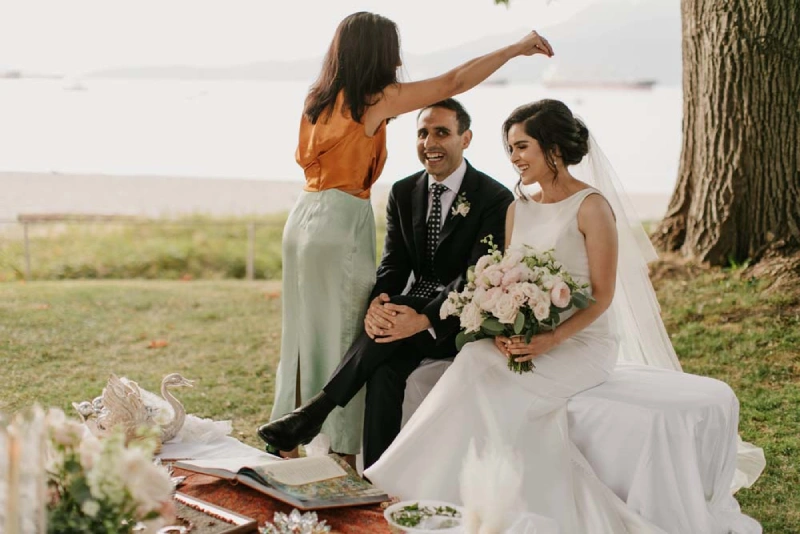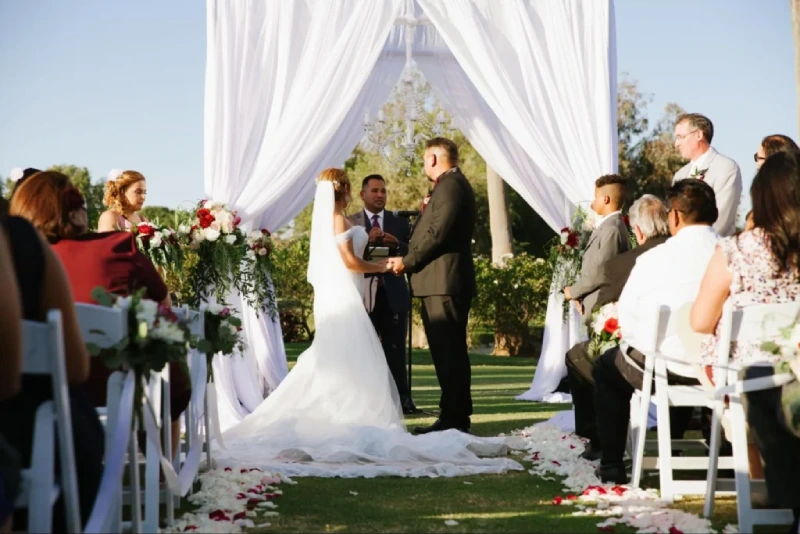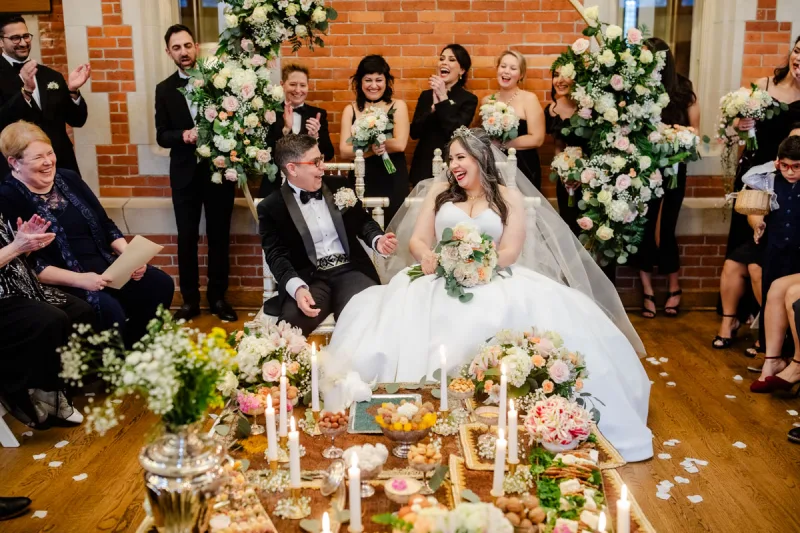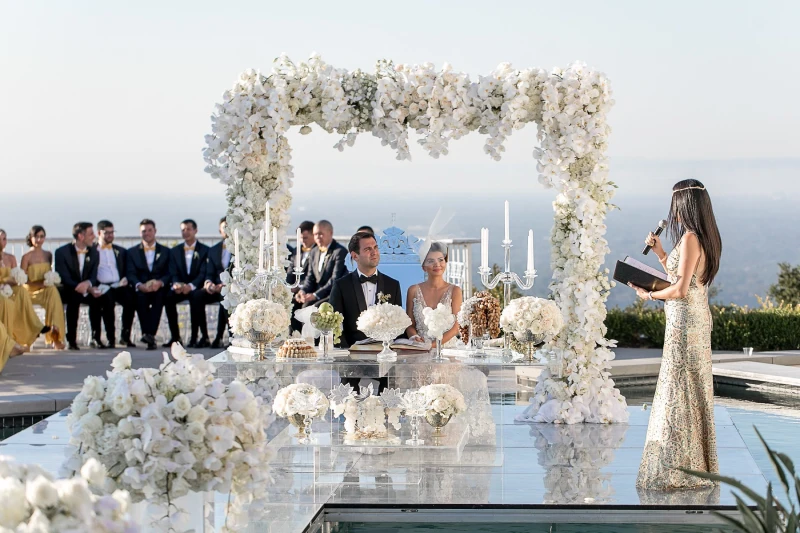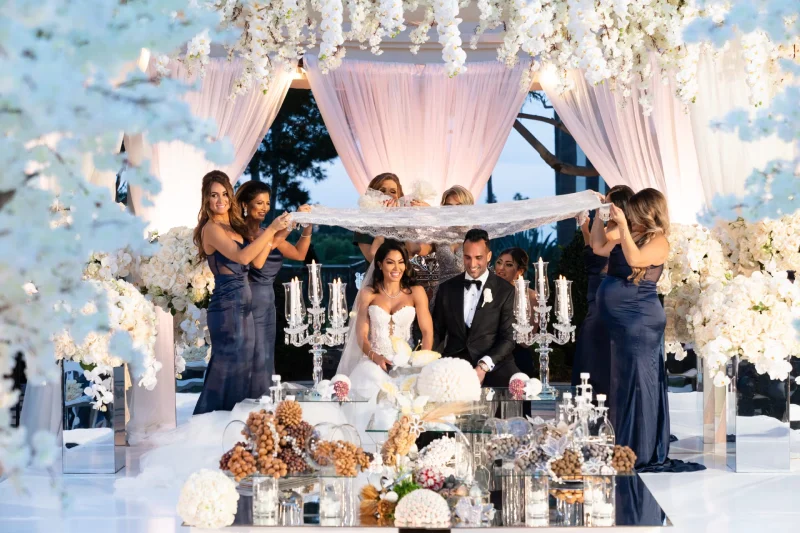Planning a Persian wedding as a mixed-culture couple is a beautiful journey that intertwines traditions and customs from both backgrounds. It’s an opportunity to celebrate love while honoring distinct heritages, creating a unique tapestry of rituals and celebrations. However, navigating cultural nuances can be a delicate task, with the potential for misunderstandings or missed expectations. This guide will explore the essential dos and don’ts of creating a Persian wedding that respects and embraces both cultures. Whether you’re incorporating traditional Persian elements like the sofreh aghd or blending in personal touches from your partner’s background, understanding key aspects can lead to a harmonious celebration. From selecting the right music to understanding family expectations, we’ll help you create a wedding day that reflects your love story while honoring the rich traditions that shaped you both. Get ready to embark on this exciting multicultural adventure!
Creating a Persian Wedding for Mixed-Culture Couples: Dos and Don’ts
Planning a Persian wedding as a mixed-culture couple is a beautiful journey that intertwines traditions and customs from both backgrounds. It’s an opportunity to celebrate love while honoring distinct heritages, creating a unique tapestry of rituals and celebrations. However, navigating cultural nuances can be a delicate task, with the potential for misunderstandings or missed expectations. This guide will explore the essential dos and don’ts of creating a Persian wedding that respects and embraces both cultures. Whether you’re incorporating traditional Persian elements like the sofreh aghd or blending in personal touches from your partner’s background, understanding key aspects can lead to a harmonious celebration. From selecting the right music to understanding family expectations, we’ll help you create a wedding day that reflects your love story while honoring the rich traditions that shaped you both. Get ready to embark on this exciting multicultural adventure!
Understanding Persian Wedding Traditions
Persian weddings are grand celebrations marked by various rituals and customs that reflect centuries-old traditions. The sofreh aghd, a ceremonial spread, is central to the wedding ceremony. It is decorated with symbolic items such as a mirror, candles, spices, and sweets, each representing different aspects of life and marriage. Understanding the significance of these items helps in appreciating the depth and beauty of Persian culture.
Another critical element is the aghd, the legal and spiritual contract between the bride and groom, often officiated by a religious or legal authority. This ritual involves specific vows and blessings, creating a sacred bond. The aghd is followed by the baleh-boroon, an engagement ceremony that signifies the formal acceptance of the marriage proposal, often involving the exchange of gifts between families. These elements highlight the communal and familial nature of Persian weddings.
Furthermore, Persian weddings are known for their vibrant celebrations, including lavish feasts, music, and dancing. The traditional music played by live bands, and the joyful dancing, particularly the baba karam and bandari, add to the jubilant atmosphere. These customs showcase the rich cultural heritage and the importance of joy and community in Persian weddings.
The Importance of Cultural Sensitivity
When planning a mixed-culture Persian wedding, cultural sensitivity becomes paramount. It’s essential to acknowledge and respect the traditions and values of both families involved. This requires open communication and a willingness to understand and incorporate elements from each culture thoughtfully. By doing so, you create a wedding that honors both heritages and fosters unity.
One way to ensure cultural sensitivity is by engaging in conversations with both families about their expectations and traditions. This dialogue can help identify key rituals and customs that are significant to each family, allowing you to incorporate them into the wedding seamlessly. It’s also an opportunity to educate both sides about each other’s traditions, fostering mutual respect and understanding.
Moreover, being culturally sensitive means being mindful of potential cultural faux pas. For instance, certain gestures, attire, or customs might be acceptable in one culture but not in another. By being aware of these nuances, you can avoid misunderstandings and ensure that all guests feel comfortable and respected. This thoughtful approach will contribute to a harmonious and joyous celebration.
Key Dos for Planning a Mixed-Culture Persian Wedding
First and foremost, do prioritize open and honest communication. Discuss your vision and expectations with your partner and both families. This helps in identifying what’s important to each party and ensures that everyone feels heard and respected. Clear communication lays the foundation for a wedding that honors both cultures beautifully.
Do incorporate meaningful traditions from both sides. Whether it’s a specific ritual Understanding Persian Wedding Traditions
Persian weddings, known for their grandeur and intricate customs, offer a rich cultural experience that dates back thousands of years. At the heart of a Persian wedding is the sofreh aghd, a beautifully decorated spread that symbolizes prosperity, love, and fertility. This spread is meticulously arranged with various items such as a mirror, candles, herbs, pastries, and a sacred book, each holding deep symbolic meanings. For example, the mirror and candles symbolize light and brightness in the couple’s future, while the herbs and pastries represent health and sweetness in their married life.
Another significant tradition is the aghd ceremony, where the couple exchanges vows in the presence of family and friends. This ceremony is often accompanied by poetry readings, music, and blessings, creating an atmosphere of joy and reverence. Guests typically shower the couple with sugar or rice, wishing them sweetness and prosperity. The aghd ceremony is not just a legal union but a spiritual and emotional binding, resonating with the cultural significance of marriage in Persian society.
Following the aghd, the reception, known as the mehmooni, is a grand celebration filled with dancing, feasting, and merriment. Persian music, often featuring traditional instruments like the santur and daf, sets the tone for the night. Guests indulge in a lavish spread of Persian cuisine, including kebabs, rice dishes, and decadent desserts. The mehmooni is a time of joy, where the couple is celebrated with love and happiness from their community. Understanding these traditions is crucial for planning a Persian wedding that respects and honors its cultural roots.
The Importance of Cultural Sensitivity
When planning a mixed-culture Persian wedding, cultural sensitivity is paramount. It involves acknowledging and respecting the traditions and values of both cultures, ensuring that each aspect of the wedding is thoughtfully integrated. This starts with open communication between the couple, discussing their expectations and preferences, and finding common ground. By understanding what each culture values in a wedding, you can create a celebration that feels inclusive and respectful to both sides.
One of the key aspects of cultural sensitivity is being mindful of religious and cultural symbols. For instance, if one partner’s culture has specific religious practices or beliefs, these should be incorporated in a way that honors their significance. This might involve including a religious ceremony or finding meaningful ways to blend rituals. It’s also important to consider the comfort and expectations of family members, who may have strong feelings about certain traditions being upheld.
Cultural sensitivity also extends to the smaller details that can make a big difference. This includes everything from the choice of music and language used in the ceremony to the type of food served at the reception. Each decision should be made with an awareness of how it will be perceived by guests from both cultures. By taking the time to educate yourself and consult with both families, you can navigate these nuances with grace and create a wedding that is a true celebration of both heritages.
Key Dos for Planning a Mixed-Culture Persian Wedding
When planning a mixed-culture Persian wedding, there are several key dos to keep in mind. First and foremost, do communicate openly with each other and your families. This helps ensure that everyone’s expectations and wishes are understood and respected. Open communication can prevent misunderstandings and help you find creative solutions that honor both cultures. Regular discussions about the wedding plans will also strengthen your connection as a couple, as you navigate the complexities together.
Another important do is to research and understand the traditions of both cultures. This includes learning about the symbolic meanings behind various customs and rituals. For example, understanding the significance of the sofreh aghd and the items placed on it will help you appreciate its importance and ensure it is prepared correctly. Similarly, if your partner’s culture has specific wedding rituals, take the time to learn about them and find ways to incorporate them meaningfully.
Do consider hiring a wedding planner experienced in multicultural weddings. A professional with this expertise can provide valuable insights and help you navigate potential cultural clashes. They can also suggest ways to blend traditions seamlessly, ensuring that the wedding feels cohesive and harmonious. Additionally, a wedding planner can manage the logistical aspects, allowing you to focus on enjoying the process and celebrating your love.
Common Don’ts to Avoid in a Persian Wedding
While there are many positive steps you can take, there are also some common pitfalls to avoid when planning a mixed-culture Persian wedding. One major don’t is to ignore or dismiss the traditions of either culture. This can lead to hurt feelings and a sense of exclusion among family members. It’s important to find a balance that honors both sets of traditions, even if it requires compromise and creativity.
Another don’t is to assume that everyone is familiar with Persian wedding customs. Guests from different cultural backgrounds may not understand the significance of certain rituals or symbols. Providing explanations, either through the wedding program or a brief introduction during the ceremony, can help everyone feel included and appreciated. This fosters a sense of unity and ensures that all guests can fully enjoy and participate in the celebration.
Don’t overlook the importance of timing and scheduling. Persian weddings can be quite lengthy, with multiple ceremonies and events spanning several days. It’s essential to plan the schedule in a way that accommodates both cultures’ traditions without overwhelming the couple or the guests. Be mindful of the pacing and ensure there are breaks and moments of rest, especially if there are elderly family members or guests traveling from afar.
Integrating Traditions from Both Cultures
Integrating traditions from both cultures into your wedding can create a beautiful and unique celebration. Start by identifying the most meaningful traditions from each culture and finding ways to blend them harmoniously. For example, you might incorporate a traditional Persian sofreh aghd ceremony followed by a ritual from your partner’s culture. This allows both sets of customs to be honored and appreciated.
Consider creating a fusion ceremony that combines elements from both cultures. This could involve blending traditional attire, such as wearing a Persian wedding dress with accessories from your partner’s culture. Another approach is to have dual officiants who represent each culture, guiding the ceremony together. This not only highlights the importance of both traditions but also symbolizes the union of two distinct heritages.
When it comes to the reception, think about merging cultural elements in the décor, music, and food. For example, you could have a mix of Persian and your partner’s traditional music, ensuring that the playlist reflects both cultures. The décor can feature motifs and colors that are significant to each heritage. For the menu, consider offering a diverse spread that includes popular dishes from both cultures, allowing guests to experience a culinary journey that celebrates your backgrounds.
Choosing the Right Venue for a Mixed-Culture Wedding
Selecting the right venue is crucial for a mixed-culture wedding, as it sets the stage for the entire celebration. Start by considering venues that are flexible and can accommodate the specific needs of both cultures. This might include spaces that have areas for traditional Persian rituals like the sofreh aghd, as well as facilities for any rituals or ceremonies from your partner’s culture.
Look for venues that offer a blend of indoor and outdoor spaces, providing versatility for different parts of the wedding. For example, an outdoor garden could be an ideal setting for the sofreh aghd ceremony, while an indoor ballroom might be perfect for the reception and dancing. Ensure that the venue has the capacity to comfortably host all your guests, with enough room for cultural performances and activities.
Accessibility is another important factor to consider. Choose a venue that is easily reachable for guests traveling from different locations. If you have guests coming from abroad, consider venues near airports or with convenient transportation options. Additionally, ensure that the venue has accommodations nearby or on-site, making it easy for guests to stay and participate in all the wedding festivities.
Culinary Delights: Merging Persian and Other Cuisines
Food is a central element of any wedding, and for a mixed-culture Persian wedding, it offers a delicious opportunity to merge culinary traditions. Start by planning a menu that features a diverse array of dishes from both cultures. This not only delights the taste buds but also allows guests to experience the flavors and culinary heritage of both backgrounds. Consider including traditional Persian dishes like kebabs, saffron rice, and fesenjan, alongside popular dishes from your partner’s culture.
Work with a caterer who is experienced in creating fusion menus. They can help you design a menu that balances the flavors and ingredients from both cuisines. For example, you might serve Persian appetizers like mast-o-khiar alongside your partner’s traditional starters. For the main course, consider offering a buffet that includes a variety of dishes, allowing guests to sample and enjoy a culinary journey that reflects your union.
Don’t forget to include desserts and beverages from both cultures. Persian weddings often feature a lavish dessert table with treats like baklava, saffron ice cream, and Persian tea. Complement these with desserts from your partner’s culture, creating a sweet ending to the meal. Additionally, consider offering a signature cocktail that blends flavors from both traditions, adding a unique and personal touch to the celebration.
Incorporating Persian Wedding Rituals
Incorporating traditional Persian wedding rituals into your mixed-culture wedding adds depth and meaning to the celebration. One of the most significant rituals is the sofreh aghd, a ceremonial spread that symbolizes prosperity and happiness. Take the time to carefully select the items for the sofreh aghd, each of which holds symbolic meaning. This might include a mirror and candles for light and brightness, herbs and spices for protection, and sweets for a sweet life.
Another important ritual is the aghd ceremony, where the couple exchanges vows and is officially married. This ceremony often includes readings from sacred texts, poetry, and blessings. Consider incorporating elements from your partner’s culture into this ceremony, creating a fusion that respects both traditions. For example, you might include readings or blessings from both cultural backgrounds, symbolizing the union of your heritages.
Additionally, the reception, or mehmooni, is a time of joyous celebration. Incorporate Persian music and dance, such as the traditional Persian dance known as “raghs,” to create a lively and festive atmosphere. You can also include cultural performances from your partner’s background, ensuring that the reception reflects the vibrancy and richness of both cultures. This not only entertains guests but also highlights the beauty of your combined traditions.
Tips for Communicating with Family and Guests
Effective communication with family and guests is crucial for a successful mixed-culture Persian wedding. Start by having open and honest conversations with both families about the wedding plans. Discuss the importance of incorporating traditions from both cultures and seek their input and approval. This helps create a sense of inclusion and ensures that everyone feels respected and valued.
Provide guests with information about the wedding customs and traditions they will experience. This can be done through the wedding invitations, website, or a printed program. Include explanations of key rituals and their significance, helping guests understand and appreciate the cultural elements. This not only educates them but also enhances their experience, allowing them to fully participate in the celebrations.
On the wedding day, consider having a master of ceremonies or a bilingual host who can guide guests through the various rituals and events. This ensures that everyone is aware of what is happening and can follow along, regardless of their cultural background. Additionally, be mindful of language barriers and provide translations or interpreters if needed, ensuring that all guests feel included and engaged.
Conclusion: Celebrating Love Through Cultural Fusion
Planning a Persian wedding for mixed-culture couples is a rewarding journey that celebrates love and cultural heritage. By understanding and respecting the traditions of both cultures, you can create a wedding that is rich in meaning and beauty. From the sofreh aghd ceremony to the joyous mehmooni reception, each aspect of the wedding can be thoughtfully integrated to reflect your unique backgrounds.
Cultural sensitivity and open communication are key to navigating this journey successfully. By honoring the customs and values of both cultures, you create a celebration that is inclusive and respectful. This not only strengthens your bond as a couple but also brings your families and communities together, fostering a sense of unity and appreciation.
Ultimately, your wedding is a reflection of your love story and the blending of your heritages. Embrace the opportunity to create a celebration that is uniquely yours, filled with traditions, rituals, and personal touches that honor both cultures. As you embark on this multicultural adventure, remember that the most important thing is the love and commitment you share, creating a foundation for a beautiful and harmonious life together.

